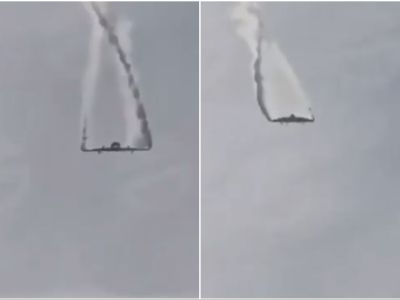Divers could start the grim task of extracting bodies from the Kursk nuclear submarine Wednesday after cutting their way into the vessel, which sank in August with the loss of 118 lives, officials said.
They began preparing for the hazardous operation "by covering the jagged metal inside the Kursk with protective material to avoid puncturing their diving suits," Northern Fleet spokesman Vladimir Navrotsky told AFP.
Remote-controlled cameras were probing the eighth compartment of the ill-fated Kursk, which was sent plunging to the seabed on August 12 by two onboard explosions.
Russia's top navy chief, Admiral Vladimir Kuroyedov flew by helicopter from the Severomorsk naval base to giant Regalia diving platform from where the recovery operation is being managed.
He was to confer with Northern Fleet commander Admiral Vyacheslav Popov on whether to give the green light to raise the first bodies.
The decision will depend on camera footage showing the conditions inside the submarine, said Navrotsky. Water samples taken over the weekend showed there was no radiation leaking from the Kursk's nuclear reactor.
"If the decision is taken (to begin recovering the bodies), the divers will not enter the Kursk before 1:00 p.m. (0900 GMT)," he added.
Two widows of officers, who died near the front of the vessel, Irina Shubina and Olga Silogava, accompanied Kuroyedov to the Regalia, Interfax reported.
The first women to visit the site of the tragedy, they will cast flowers onto the sea on behalf of all the widows and mothers of the lost crew, Navrotsky told the news agency.
A Northern Fleet officer who asked to remain anonymous told AFP that the divers expected to recover seven bodies from the submarine's eighth compartment.
Normally, an officer, two first mates, a second mate and three sailors would be stationed in the section. But another three submariners from the neighboring section might have taken refuge there as well, he added.
Three divers -- two Russians and a Norwegian -- at a time are descending to the wreck site out of a total team of 18.
Only the Russians are scheduled to go inside Kursk while the Norwegian diver is due to stay inside their bell-shaped submersible to monitor their work.
The operation to cut an opening measuring 1.5 meters by 75 centimeters (around five feet by two feet) in the Kursk's 40-centimeter (16-inch) thick inner-hull began on Saturday.
Another six such holes are to be cut elsewhere in the Kursk, which has been lying in 108 meters (355 feet) of water since it sank some 150 kilometers (90 miles) off Russia's northwest coast.
The cause of the accident remains a mystery, but the submarine was sent plunging to the bottom of the Barents Sea after a massive explosion that decimated its front section.
Kuroyedov said Tuesday he was "80 percent certain" that the Kursk had been sunk by a collision with another submarine.
Experts predict that only 20 to 30 percent of the bodies are likely to be recovered as little can remain of a crew that perished when a blast equivalent to some five tons of TNT tore through the front of the craft.
The salvage mission has concentrated on the rear section, which was relatively undamaged by the catastrophe.
The recovery work was suspended at the end of Monday because of a fierce storm, before resuming Tuesday when weather conditions improved -- SEVEROMORSK, Russia (AFP)
© 2000 Al Bawaba (www.albawaba.com)









